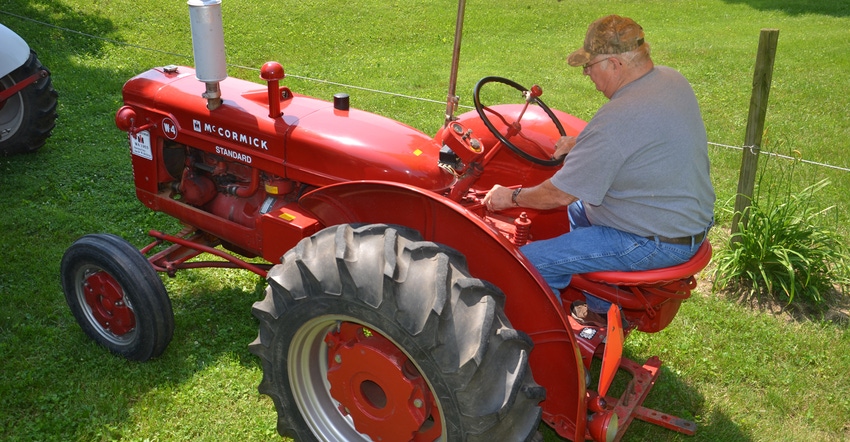
Earlier this year, we noted that the Farmall M replaced the McCormick-Deering W-6, and a reader correctly noted that technically, that’s incorrect. They were made at the same time. According to the reader, the W-6 was the standard tread version of the Farmall M.
The reader is right, more or less. International made the tractors at the same time. Exactly when W-6 and W-4 models were made, plus several other details, depends upon which tractor historian you consult.
One of the biggest debates centers around what exactly “standard tread” and “row crop” models mean. After following several discussion threads on the internet and checking various websites, the best answer seems to be: “It depends.” Most people think of a tractor with a narrow front end when they think of a row crop tractor, but that’s not necessarily the case. Some think of a tractor with a fixed, wide front end that you can’t adjust for a standard tread tractor, but that’s not necessarily always true either.
To add to the confusion, various companies used the terms differently, and sometimes for different tractor models within their lineup. The best advice is to be as precise as possible when you’re describing a tractor of interest to someone. “Standard tread” and “row crop” may mean different things to different people.
 COUSIN OF THE M? Call it a cousin, brother — whatever you like. The connection between the W-6 and the M depends upon whom you talk to. The W-6 was the standard tread version of the M; however, there are multiple definitions for “standard tread.”
COUSIN OF THE M? Call it a cousin, brother — whatever you like. The connection between the W-6 and the M depends upon whom you talk to. The W-6 was the standard tread version of the M; however, there are multiple definitions for “standard tread.”
With that said, here’s a look at a few details about the W-4 and W-6 tractors.
McCormick and Farmall tractors
• W-4. According to tractordata.com, McCormick-Deering began making the wide-front W-4 in 1939, although some sources put it at 1940, with only limited production until 1941. It continued through 1953, with more than 24,000 produced. Tractordata.com states it was the regular or standard version of the Farmall H, but other sources note it basically replaced the Farmall 10-20. The company claimed 17 hp at the drawbar for the W-4, but it tested at nearly 24 hp in Nebraska tractor tests. The W-4 carried the McCormick-Deering name until 1945, when the Deering name was dropped. Neither the W-4 nor the W-6 carried the Farmall name on the side panels.
• Farmall H. The H tested at just over 24 hp, according to tractordata.com, and was also made from 1939 through 1953. List price was roughly $50 more than for the W-4. The H replaced the Farmall F-20, and was followed by the Super-H. The W-4 is listed as the standard tread variant of the H.
• W-6. The wide-front W-6 had roughly 32.5 drawbar hp when tested. Tractordata.com lists it as the standard tread version of the Farmall M. It was produced from 1940 through 1953, and was followed by the McCormick-Deering Super W-6. The Model M is listed as a variant of the W-6. More than 28,000 W-6 tractors were built.
• Farmall M. This tractor typically came with a narrow front end, and while International Harvester only claimed 25 hp at the drawbar, it tested at 33. More than 270,000 M tractors were built at the Rock Island, Ill., plant. The M is commonly thought to be the most popular IHC tractor of that era, and while nearly 10 times more M’s were built than W-6 models, it was outpaced by the smaller H. More than 391,000 Model H tractors were built during the same period, from 1939 to 1953.
About the Author(s)
You May Also Like




